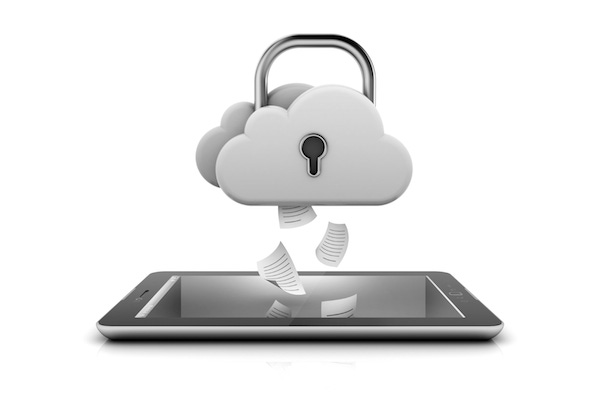It’s a painful reality that 94 percent of businesses close their doors within two years if they suffer a major data loss. Another alarming truth is that as many as 96 percent of the PCs in the market today are not adequately backed up—and let’s face it, I am sure in many cases we could extend that stat out to hardware in general and come close to that same percentage. Further compounding this issue here is that 44 percent of the more than 350 channel partners recently surveyed on this topic said they are not proactively selling backup and disaster recovery (BDR) to their customers.
December 27, 2013

By Intronis Guest Blog 2_2
It’s a painful reality that 94 percent of businesses close their doors within two years if they suffer a major data loss. Another alarming truth is that as many as 96 percent of the PCs in the market today are not adequately backed up—and let’s face it, I am sure in many cases we could extend that stat out to hardware in general and come close to that same percentage. Further compounding this issue here is that 44 percent of the more than 350 channel partners recently surveyed on this topic said they are not proactively selling backup and disaster recovery (BDR) to their customers. Instead, they are taking a wait-and-see approach to the problem, which is never good. Don’t be that VAR or MSP who rolls the dice and hopes it “never happens to them.”
The cloud storage market, inclusive of backup and recovery, is estimated to reach $46.8 billion by 2018 at a CAGR of 40.2 percent, according to research from MarketsandMarkets, and that translates to a whole lot of opportunity for those VARs and MSPs who are incorporating cloud-based BDR into their services mix.
Still not convinced cloud BDR is a service for you and your customers? In that same survey, more than half (56 percent) of those channel partners who are selling cloud-based backup and recovery reported it as their top-selling and most profitable service. That probably got your attention, right?
So how do you sell cloud-based BDR to your customers? Well, here’s the thing … you don’t. Instead, you engage your customers in business discussions that address several of their key concerns and then you offer to resolve them with your services (which now include cloud-based BDR). You could even go as far as to make it their idea.
If that sounds right up your alley, but you’re not sure where to start, here are the top four areas many of our best partners drill down on with their customers and prospects:
Reliability. Business owners should be educated on the risks associated with using only onsite storage, including the inevitable failure and potential loss of all data in the event of a natural disaster. With a cloud backup solution, their information can be fully encrypted and stored on multiple servers in different geographic locations—100 percent secured and available to send to alternate locations if and when it’s needed. Whether the organization loses a single file or its entire directory, the data is easily locatable and can be quickly restored.
Cost. Businesses typically spend between several hundred to several thousand dollars on removable media (tape drives and hard drives), and they often use several tapes (at $25 to $50 a pop) to back up their information each week. When providers factor the costs of transportation and labor into the discussion, it helps to illustrate the value that cloud BDR solutions offer. By moving to virtual storage, their business customers can reduce future capital investments and shift many of those costs to a more predictable periodic payment plan. Since SMB owners are typically willing to pay a bit more for the expenses they can accurately forecast, it gives them even more reasons to implement cloud-based BDR solutions.
Ease of use. Complexity can be a deal-breaker when it comes to selling technology, so solution providers who can make BDR an easy proposition for their SMB customers will be more likely to succeed. Simplicity is a major advantage for cloud-based backup systems, which shift a majority of the labor (and headaches) these organizations endure with portable tape and disc solutions to a VAR, MSP or other offsite service provider.
On the flip side, the setup for cloud BDR solutions is highly automated and subsequent updates (and backups) occur seamlessly with little or no operational interruptions, so the business owner’s time to value is accelerated. And when something does compromise a customer’s onsite information, web-based backup systems allow users to recover their files at any time from any location, quickly and easily. Again, another great reason to switch to cloud-based BDR.
Data security. Cloud backup provides a virtually risk-free method for protecting important business information. Intronis, for example, uses a 256-bit encryption key to lock down all information and adds Secure Sockets Layer (SSL) technology for extra protection during transmission over the internet—the same protocols used for online banking and credit card applications. Traditional tape and disk media run the risk of being damaged, lost or stolen in transit, or could simply be forgotten and destroyed when a disaster occurs.
The bottom line is cloud-BDR is a must-have service for trusted IT providers because when that day comes—and it will—you want to say with confidence to your customers: “Don’t worry. We’ve got you covered.” That simple phrase will be priceless and make them customers for life.
For more ideas on selling cloud backup, our e-book, “The Ultimate Guide to Selling Cloud Backup,” offers more guidance to MSPs looking to expand their footprint.
 Neal Bradbury is a co-founder and vice president of Channel Development at Intronis, a cloud-based backup and disaster recovery provider that works closely with VARs and MSPs.
Neal Bradbury is a co-founder and vice president of Channel Development at Intronis, a cloud-based backup and disaster recovery provider that works closely with VARs and MSPs.
You May Also Like
